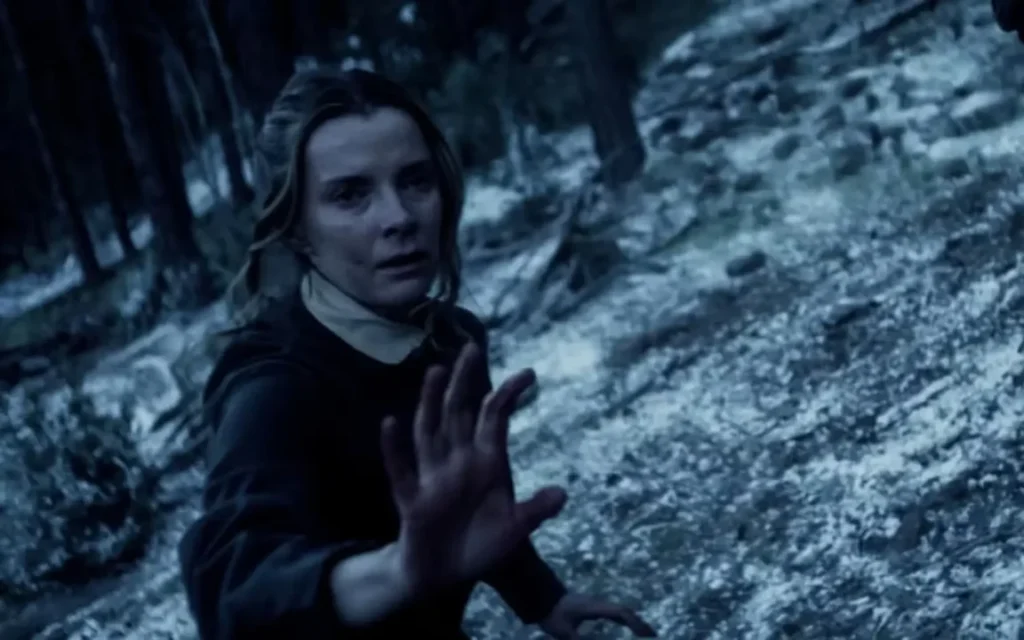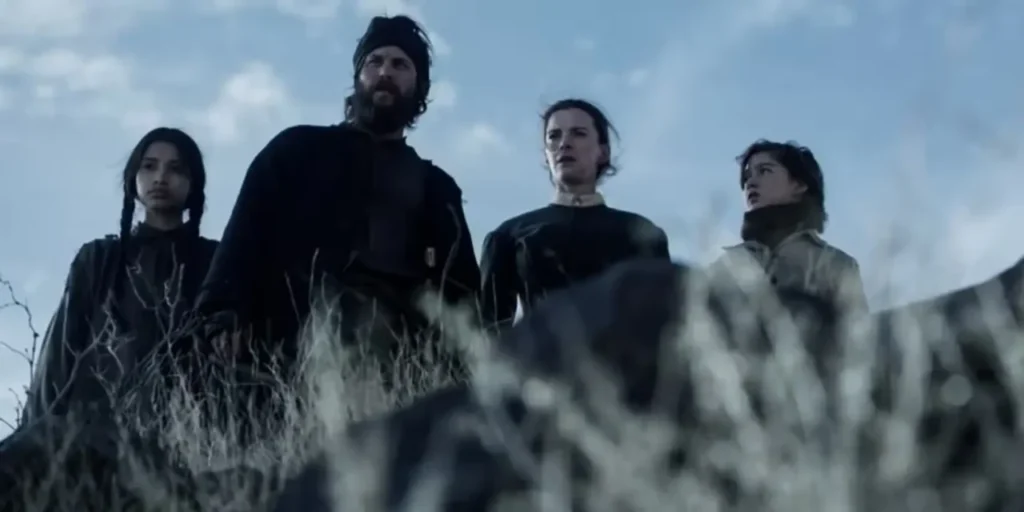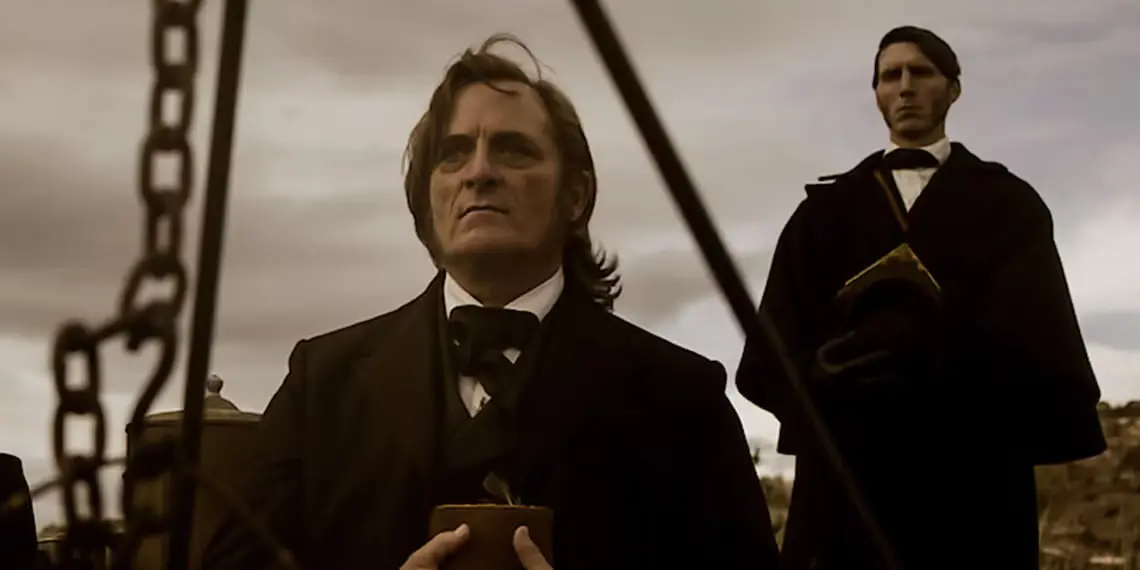American Primeval, a six-episode western series, is set to premiere on Netflix on January 9. It explores the turmoil and strife in Utah during 1857, showcasing different groups battling for survival. The show boasts a talented cast, including Taylor Kitsch, Shea Whigham, and Jai Courtney. Directed by Peter Berg, this gritty series offers an authentic glimpse into life in 1850s America.
Game Rant recently had a chat with Kim Coates, the actor known for his portrayal of the historical Mormon leader Brigham Young. Coates, who has an impressive career featuring prominent roles in popular series like Sons of Anarchy and Bad Blood, shared that this was a role he just couldn’t resist. The interview has been refined for clarity and conciseness.
Brigham Young’s Role in American Primeval

Q: What was it like working with director Peter Berg on American Primeval?
A: Peter Berg’s work on this limited series is truly one of a kind. His artistic vision is remarkable, and his boldness is inspiring. He trusts everyone to excel in their roles, which allowed me to fully dive into the character of Brigham Young. Being offered that role was an incredible opportunity—it’s not every day you get to portray someone like him in your career.
Q: What information did you have about Brigham Young prior to starting this position?
A: I didn’t know much about Brigham Young aside from the university and its connection to Mormonism. I’m not well-versed in the Mormon faith, but when the opportunity arose to portray this character, it felt alive and thrilling. I was absolutely terrified, unsure of what I was getting into, but I was eager to jump on board.
I began exploring photographs of the real Brigham Young and delved into three extensive biographies about him, along with a novel titled The 27th Wife that covers his many wives. With two and a half months to immerse myself in his mindset, I appreciated the time I had. To me, Brigham Young is reminiscent of Dracula; he may not appear frequently in the narrative, but when he does, it’s all about him. His ideals take center stage as he advocates for his followers. When he’s on screen, you’d better pay close attention because it’s an all-hands-on-deck situation.
Q: What was your method for portraying Brigham Young in your performance?
A:I consider myself an internal actor, and I really dislike the term ‘method.’ Most kids today probably don’t even know what it means. Young actors often struggle with the concept of method acting. Instead, I prefer to refer to myself as an ‘internal actor.’ Recently, playing Brigham Young was one of the few instances where I approached the role from the outside in. When portraying a real historical figure, regardless of your personal beliefs about Mormonism or religion, it’s crucial to grasp every detail. What did he look like? What information do we have about him? How did he present himself? What kind of clothing did he wear?
Peter Berg was certain about his aspirations. Brigham Young stood out for his captivating blue eyes and intense stare. He had an uncanny ability to see into people’s souls, and his intellect was remarkable. Although he lacked formal schooling, he was a voracious reader, always seeking knowledge. I found it essential to comprehend the relationship between polygamy, monogamy, and the Mormon religion. This required extensive preparation, including reading biographies and examining his depictions in art.
In the weeks leading up to filming, I focused on my internal preparation. My goal was to instill a powerful sense of strength in the character, conveying emotions through subtle expressions.
Q: How long did you spend researching and learning about the character?
A: To be honest, I’m still trying to fully understand him. I started out as a history major in college before I found my passion for drama, which eventually became my focus. I’m really into history, so diving into the life of Brigham Young and the Mormon faith was incredibly fascinating. I had a treasure trove of research to draw from for this role.
Next, you begin to explore their way of speaking. I had a Mid-Atlantic accent, and sounding like I was from the Bronx just wouldn’t fit. A British accent wouldn’t work either, as that wasn’t how they communicated. These individuals hailed from Pennsylvania, Southern Ontario, and Canada, where the Mormon faith began to emerge, and they used a Quaker-like dialect. Their speech blended elements from England, Scotland, and America. It was an enjoyable experience to delve into this character. Throughout the journey, I never truly felt like Brigham Young.
Q: What would you say was the most surprising thing that you learned about Brigham Young?
A: Brigham Young played a crucial role in preserving the Mormon faith. His efforts to protect both the people and their beliefs were nothing short of remarkable. He led them across mountains and through winter streams, using numerous carts. The records of his arrival in Utah are well-documented. When he reached the flatlands, there was no vegetation to be found. It was a challenge to grow even a single blade of grass in that stunning mountainous region of Salt Lake.
It was a salt lake, barren and desolate. Upon arrival, he dismounted from his horse and famously declared, “This is the place.” Portraying a character like him means honoring his deep reverence for God and his selfless mindset of, “I’m doing this for my community; my own life is secondary. This is about God and the mission He has set before me.” Whether Kim Coates has faith or not isn’t the focus; exploring this man’s psyche, his spiritual beliefs, and the immense strength they provided was truly enlightening.
How American Primeval Balances Historical Accuracy With Dramatic Storytelling

Q: How do you feel that American Primeval balances historical accuracy with dramatic storytelling?
A:They made the choice early on to avoid CGI altogether. There are no artificial weather effects or anything of that sort. When you’re aiming for authenticity like this, it’s essential to be ready for the elements. You need to anticipate things that might go wrong. You’re working with genuine weather, real animals, and tangible situations. We had the best wranglers in the world to help manage the horses, and then there are the experts who bring the wolves to life with their growls and snaps—it’s no small feat! These are actual people and animals, which is why I have such a deep affection for this series. It truly embodies realism.
A significant aspect of achieving balance in this project is the power of the writing. The drama in the writing captivates you, whether it’s a scene filled with arrows soaring or a simple conversation between two characters. Our director, Peter Berg, played a crucial role in making it all come together beautifully. I’m really looking forward to collaborating with him again; he’s truly exceptional.
The whole Fort Bridger set was constructed to scale, reflecting the true dimensions of Fort Bridger. Netflix truly went all out! What you see on screen is the genuine article. The cast was spot on, and the performances by the indigenous actors were outstanding.
Q: Was there any particular moment that stood out to you from the experience?
A: That’s a great question! I don’t really have any favorites, but I have to say that working with Shea Whigham was fantastic. We felt like two big bears teaming up. Peter Berg mentioned that our scenes together were filled with energy, and it was truly amazing. Shea is just incredible.
I have to mention that the horse I rode, Phoenix, was absolutely enormous! Whenever I climbed onto that giant stallion, there was no messing around. I’ve been riding for as long as I can remember, and they chose this stunning black beauty for me. Phoenix had a bit of a spirited personality, which made him a challenge to handle. He wasn’t one to stand still for long, so it could get a bit tricky at times.
We never rode with a double! I did all my own riding. I’ll always remember dressing him up. Riding that horse alongside Phoenix, Shea, and Peter was unforgettable. It was such a special time.
Q: Were there any moments in the show that you feel define Brigham Young in terms of the sort of person he was?
I haven’t watched the entire thing yet because I wanted to hold off until the premiere and experience the surprise. I’m aware of what I filmed, but I’m curious about what made it into the final cut. As for a defining moment, I’m not quite sure. There are moments where I don’t speak, but my eyes convey my thoughts. The scenes with Shea and me as Bridger and Brigham Young, debating the price for the fort, were truly a remarkable showcase of our acting skills.
Q: What do you feel would’ve been the toughest aspect of living in 1850s America?
A: Great question. How did anyone survive in 1850s America? I don’t know, because it was such a melting pot. You had the Mormons, the white men, the Native Americans, the Chinese just to name a few! Honestly, how were people meant to survive? Where should they go for their piece of land? What’s going to happen? How do they go to sleep at night? How anyone survived back then in 1857 in America is beyond me.
The show excels at highlighting this aspect too. Viewers have the freedom to choose their favorites. Every narrative requires a hero, and there are several in this one, but ultimately, everyone is driven by the need to survive, making the distinction between right and wrong quite hazy.
Disturbing scenes are playing out on screen, all in the name of survival. The need to endure is universal. Peter was completely unfiltered, no doubt about it! This script is infused with love, attention, and hard truths. I can’t say everyone will be pleased with the realities we present, but that’s how we grow through history. We often miss the mark, failing to learn from our past mistakes. Still, as humans, we don’t give up. We’ll keep pushing to create quality content.
